Interview with artist Andy Denton
Andy Denton is a Little Rock artist working in ceramics and metal. He has over 20 years of experience in the arts industry and has exhibited his work throughout the United States and Europe. Andy earned an MFA from East Carolina University and a BFA from the School of the Art Institute of Chicago. Subsequently, he served as Interlochen (Michigan) Center of Arts Studio Manager and two years as artist-in-residence at the Armory Art Center in West Palm Beach, Florida where he taught sculptural welding. Andy grew up near Richmond, Virginia. He moved to Little Rock in 2018 to be the studio manager and fabricator for Little Rock sculptors Maritza and Terry Bean. More of Andy’s work can be found at his Instagram and at andrewwilliamdenton.com. (profile photo by Layet Johnson)
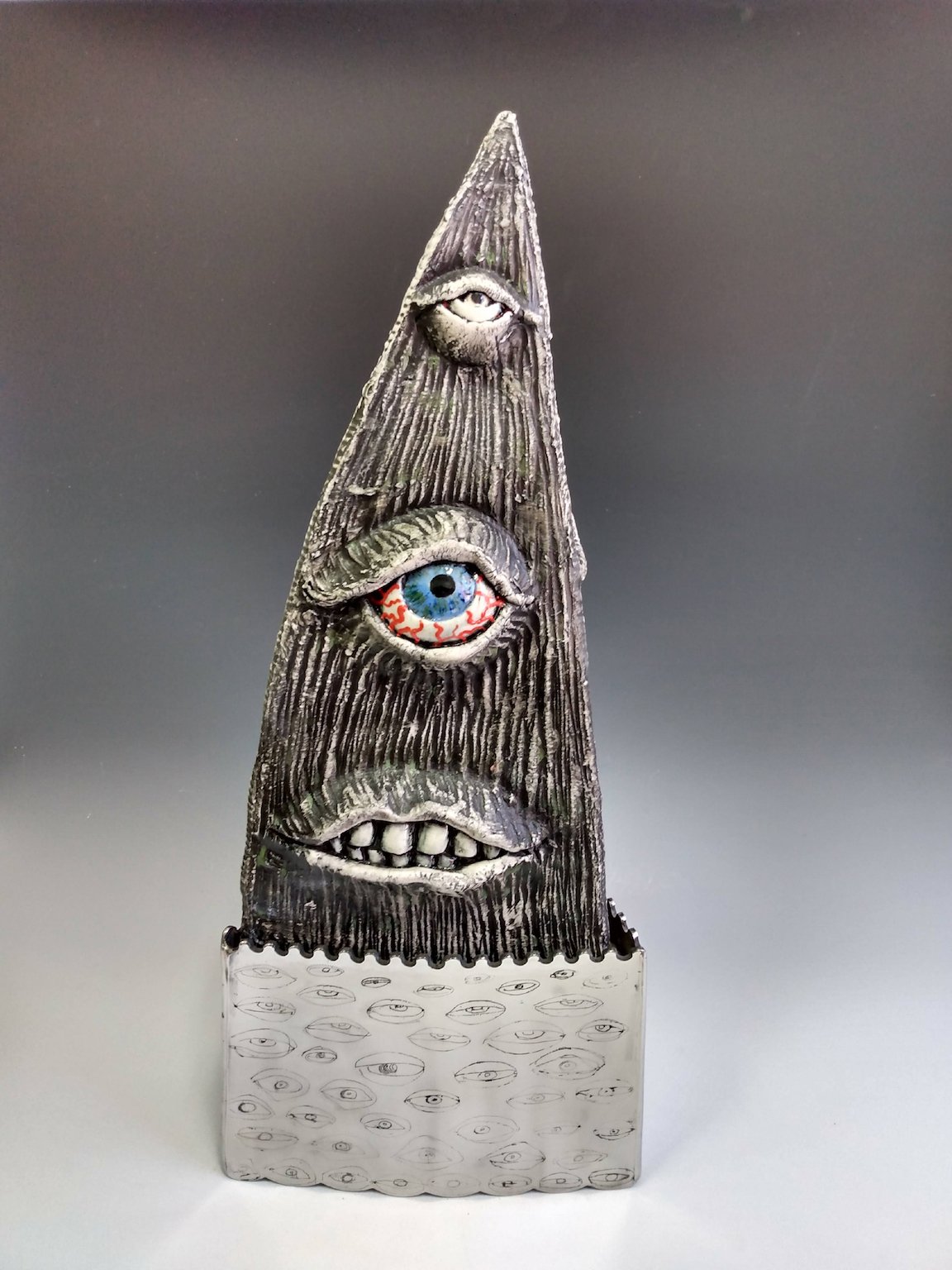
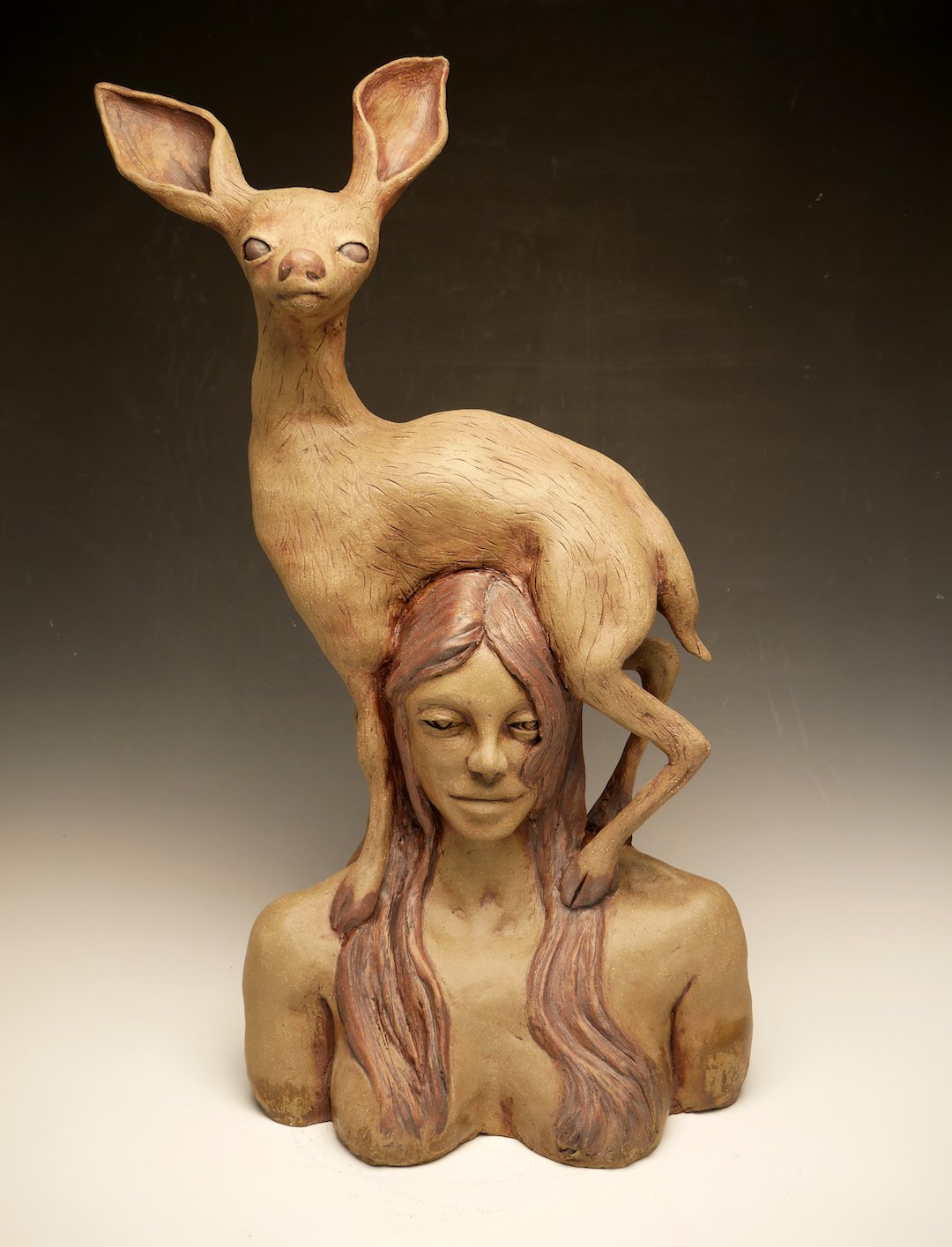
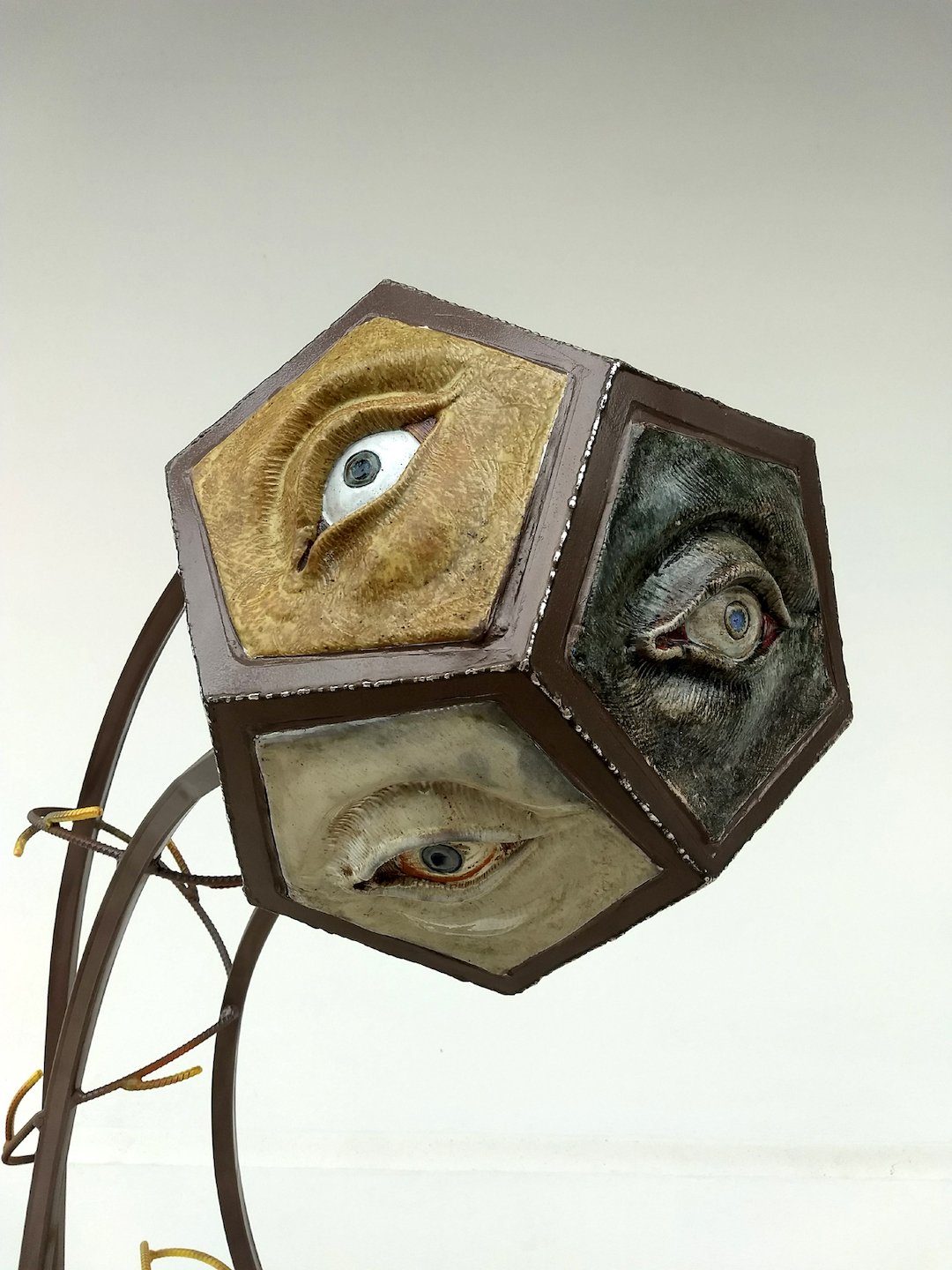
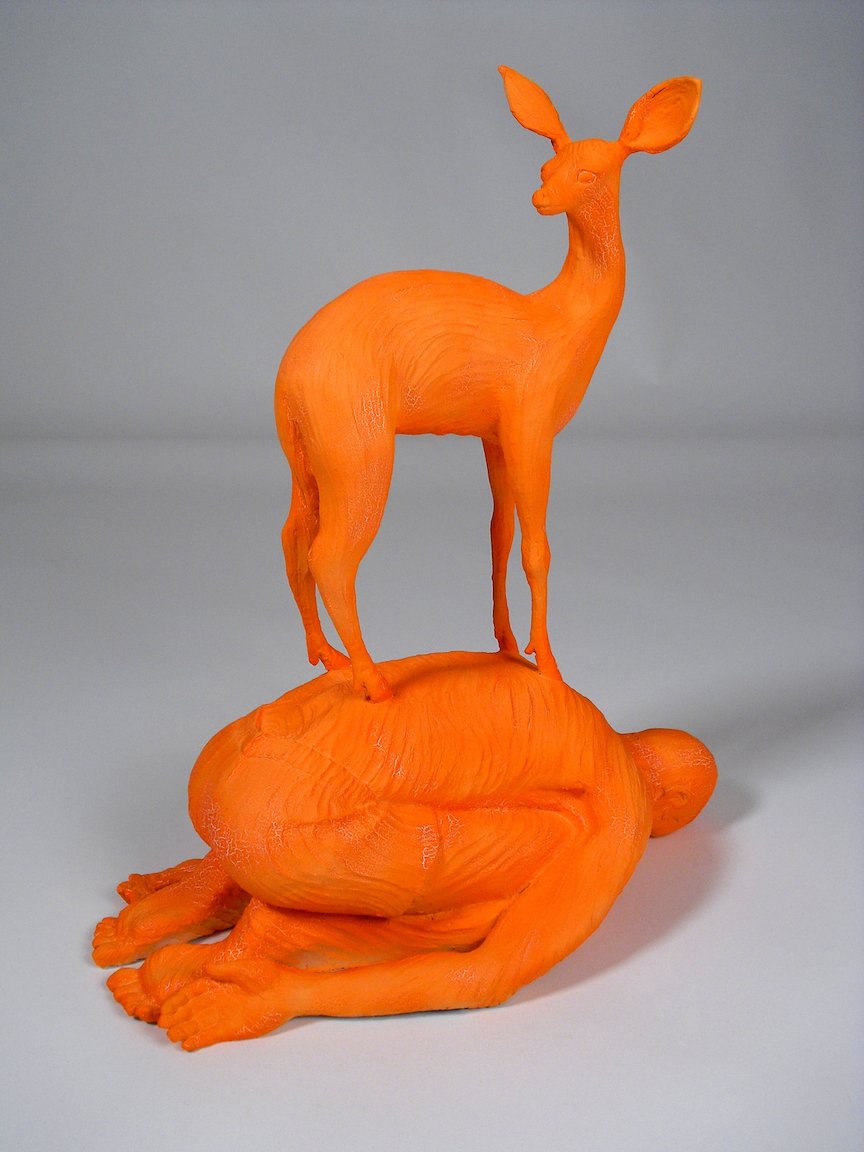
AAS: Andy, tell me about yourself. Where did you grow up?
AD: Well, I grew up in Mechanicsville, Virginia. A rural suburb of Richmond. As soon as I could, I wanted to get to a big city far away from the south and I heard a lot about Chicago. So, my art education started at the School of the Art Institute of Chicago, where I earned my BFA. Later I earned my MFA from East Carolina University.
AAS: You earned art degrees from two outstanding art programs. Tell me more about your art education and work experiences.
AD: So my art education started at the School of the Art Institute of Chicago. SAIC was a big eye-opener for me. I got a job as a bike messenger while a student and learned the arteries of commerce and traffic of Chicago. Then I had an internship where I learned more about welding and when I graduated, I had a job at that metal same furniture shop. I was a shop rat! Grinding and welding all day, riding a bike through the snow to get to work. I remember my future boss at the job interview said to make sure to “wear garbage clothes”. But I learned so much there, to this day I'm still using skills I learned at my first fabrication job.
Skip ahead a bit and I moved back home to Virginia because I missed my family and felt a little crushed by the big city life and student loans. I kept employed with metal shop jobs for a few years. Eventually I knocked on the door of VCU and asked if I could help out with their foundry classes. I made friends with a few MFA candidates at the VCU sculpture program and was going to their exhibits and open studios and thought I could do this.
East Carolina University attracted me to their MFA program in Greenville, North Carolina. It had a sculpture program that focused on outdoor sculpture, creative research, and casting iron. I wanted a different college experience than I had at SAIC, only to diversify my experience. At ECU, I learned even more about casting metal, exhibiting outdoor sculpture, and teaching art. After graduating I stayed in Greenville and taught design courses at Pitt Community College and worked on my sculpture. It was around this time I discovered ceramics.
AAS: What brought you to Little Rock?
AD: I came to Little Rock to work for local artists Maritza and Terry Bean in 2018. I met them in West Palm Beach where I was completing my 2nd year residency at the Armory Art Center. I was teaching welding sculpture classes and Maritza took my class. They were looking for a fabricator and studio manager for their Little Rock facility and I was looking for my next gig and hopefully a more permanent job. While in Little Rock I've made all sorts of different things for the Beans: large-scale outdoor sculptures, steel pedestals for their showroom, small maquette-sized sculptures that they design and we build. We got a large CNC plasma table that can used to enlarge their maquettes and elements of their work. They keep me very busy. If I'm not building their artwork, I'm maintaining their metal shop or working on projects for their storage unit management company.
AAS: What I love most about your work is that it often combines a ceramic or porcelain element with a metal element – and that they all have a whimsicality to them. Watchful Hungry Bumpass is one of my favorites. Tell me about that piece.
Watchful Hungry Bumpass, 15” x 8” x 8”, porcelain and steel
AD: For me the combination of ceramic and metal is a way to have some creative perimeters and to push against those parameters. It’s fun to find a way to make these two materials work together. Usually, people respond to one more than the other in the sculpture. For instance, they'll like the metal part more and say it looks better without the other element. Then I know I've done something right. :)
I think Bumpass is funny. It’s sort of disturbing and creepy, but creepy makes me laugh. I had no idea of what I was making while it was being constructed, just that I wanted to play around with abnormal facial features. I play with facial features in my pottery, so I try to bring that playfulness into the sculptural pieces. This one reminds me of the alien characters in the Simpsons show and a Spongebob Squarepants character rolled together, but that's entirely accidental. If it came alive and started crawling around on those tentacle legs, I would run away from it. I'm really sorry, everyone. It should probably be destroyed, just in case.
AAS: With Providential Shit-Storm the ‘eyes’ have a very nervous look to them as they gaze upward. It is a wonderful piece. Tell me more about it.
Providential Shit-Storm, 20” x 13” x 13”, porcelain and stainless steel
AD: They're looking all over the place, for sure. At the time I made this one, it was the summer of 2020 and the world seemed to be falling apart or getting rolled into a big turd. The Covid Pandemic was just beginning, the George Floyd murder and the ensuing protests and riots in the street, the looming Biden-Trump election. I felt like a historic shit-storm was brewing or we were all in one. I was reading a book called Pipe Dreams: The Urgent Quest to Transform the Toilet and was learning about the history of indoor plumbing and sewer systems, while enjoying my newly installed pandemic bidet at home. I learned about these things called “fatbergs” that clog up sewer systems that are made up of all the things that aren’t supposed to be flushed down the toilet. Look it up. I thought, what a metaphor for these times! I combined this idea with the Eye of Providence, which has this mysterious and occultist American kind of history. It’s fitting that they look a little nervous.
I've always been influenced by music in my art career – like stealing titles from song lyrics. Sometimes I think I choose art just so I can have something to do while listening.
AAS: Who are some of the artists you admire and who inspire you?
AD: When I was a college student, the Contemporary Art Museum of Chicago held an exhibit by HC Westermann (1922 – 1981) , an American Dada wood sculptor. His work was about his experiences in WW2 and Korean War. Coming from a military family myself (my brothers are third generation Marines) I was impressed with his way of using art to talk about the brutality of war in a very personal way, but there was also a lot of humor and complexity in it. He was a meticulous craftsman, using cabinetry furniture techniques to construct these funky figures that told stories. He was kind of an outsider and wasn't really in step with contemporary art at that time. I loved it. I still go back and look at my exhibition catalog for inspiration. I'll mention Lorado Taft because he's practically unknown at this point, although he has figurative sculptures all over the Chicago Art Institute. They're the sort of allegorical symbolic figurative statue-type sculpture from the American Renaissance movement of the early 20th century that isn’t really cool these days. But I think the human body is still a great way to talk about issues and to get people talking. Martin Puryear is another craftsmen sculptor that blows me away with his forms and attention to detail. These artists seeped into my brain when I was a sapling of an artist. I get a lot of inspiration from music. King Gizzard and the Lizard Wizard is a rock band that I often have playing in the studio and my friends are really sick of hearing them. They are making music that is pleasing to me, while being challenging – fantasy themes, climate crisis themes, and often funny. I've always been influenced by music in my art career – like stealing titles from song lyrics. Sometimes I think I choose art just so I can have something to do while listening.
AAS: I want to next ask about your large outdoor sculptures. The first is Wind to the Dove. It is a hopeful image cast in aluminum. What was the inspiration for that image and how was it made.
AD: It was made at a time when I was exploring the idea of yoga practice and mediation as a way to transcend reality. During my thesis in graduate school, I explored what auras could look like in three-dimensional space and what if they could take on the shapes of animals or anything else. I'm glad this looks hopeful to you; it was my attempt at making an uplifting sculpture. The figure and the bird were made in oil-clay and molded and then cast from recycled aluminum and the wave parts are aluminum tubing. I cast it in Durham, North Carolina and completed it in Greenville. The figure and bird part were originally meant to be a model for a life-sized sculpture, but I ran out of steam to work that big at that time or it just wasn’t the time in my life, so it stayed that size. Its name comes from a Bill Callahan song about the space between the wind and the dove. I was really trying to solidify the ephemeral at this time.
Wind to the Dove, 8’ x 3’ x 6’, cast and fabricated aluminum
Wind to the Dove, 8’ x 3’ x 6’, cast and fabricated aluminum
AAS: Where do you do your fabrication and ceramics now?
AD: I use a variety of places. The Beans have been kind enough to let me have studio space in their facility in Alexander, which is a great benefit for me. I basically do my metal fabrication there and my ceramics start out there. That is basically homebase for my practice. For my ceramics, it's been a little disjointed since the pandemic. I've been lucky enough to get connected with potter Stephen Driver and participated with the last couple of firings at his anagama wood-kiln in Ozark, Arkansas. I love that because it's one of the few ways to fire ceramics that is relatively environmentally conscious. It's also a rewarding group activity. Stacking and chopping wood, taking turns stoking the flames in the middle of the night for the 4-day firing process. I love the unpredictability of the glaze results and Stephen is cool as hell. Since I spend a lot of time alone in the studio and at work, it's been good for me to have mentor-type people to talk about art with.
I'm also excited to be back to the Wingate School of the Arkansas Museum of Fine Art in Little Rock. I was doing a lot of functional (but still weird) ceramics there before it closed down for their re-build. A lot of local potters had to adapt without that resource, and I shifted back to sculptural pieces that didn't require functional glazing, and I could do it at my studio. Now that it's back open I'm psyched to do more firings there. Bonus: it’s a pretty museum now. I’m a museum nerd.
AAS: Returning to your eyes-to-the-sky theme, you created Providential Eye Storm, a large outdoor sculpture. Tell me about it.
Providential Eye Storm, 7’ x 3’ x 3’, wood-fired ceramic, aluminum, paint
AD: It is basically a bigger version of Providential Shit-Storm, but it took way, way, way more time and work to build. I made the original in oil-clay and took a plaster mold of it, then I bisque-fired it and brought it to the wood-firing at Stephen Driver's. I think that took close to a year to make and the aluminum part took another year, at the snail-pace I’m going these days in my spare time. The metal part is all welded aluminum and painted with spray-paint and ceramic egg-piece is caulked and glued in. It was recently on display in Hillsborough, North Carolina as part of the Uproar Festival of Public Art. I’d like to do more like this one. Kids like it. This piece is leading me to work about personified clouds as a theme, which might be good to get away from the personified poop theme, you know, for commercial reasons. ;-)
AAS: You also create some terrific vessels. One of my favorites is Fool King of Springrint. Do these give you an opportunity to experiment with different glazes and handbuilding techniques?
Fool King of Spring, 9” x 6” x 6”, ceramic
AD: Fool King of Spring features dogwood trees blooming on the back of the head/vase. I was experimenting with sgraffito on this one and exploring drawing on pottery. Yes, pottery is great way to be creative and get that sense of gratification a little faster. Spending multiple years on one sculpture can be difficult for your mental health. I also like pottery because you don't have to explain it as much (although I may be wrong about that). It's just a cup with a face on it and people get it. It is a way for me to be funny and expressive. It a break from work-work because metalworking can be very stressful and strenuous. Pottery has been a way for me to let loose and make something dumb and silly. Plus, you can drink from it and that’s nice too.
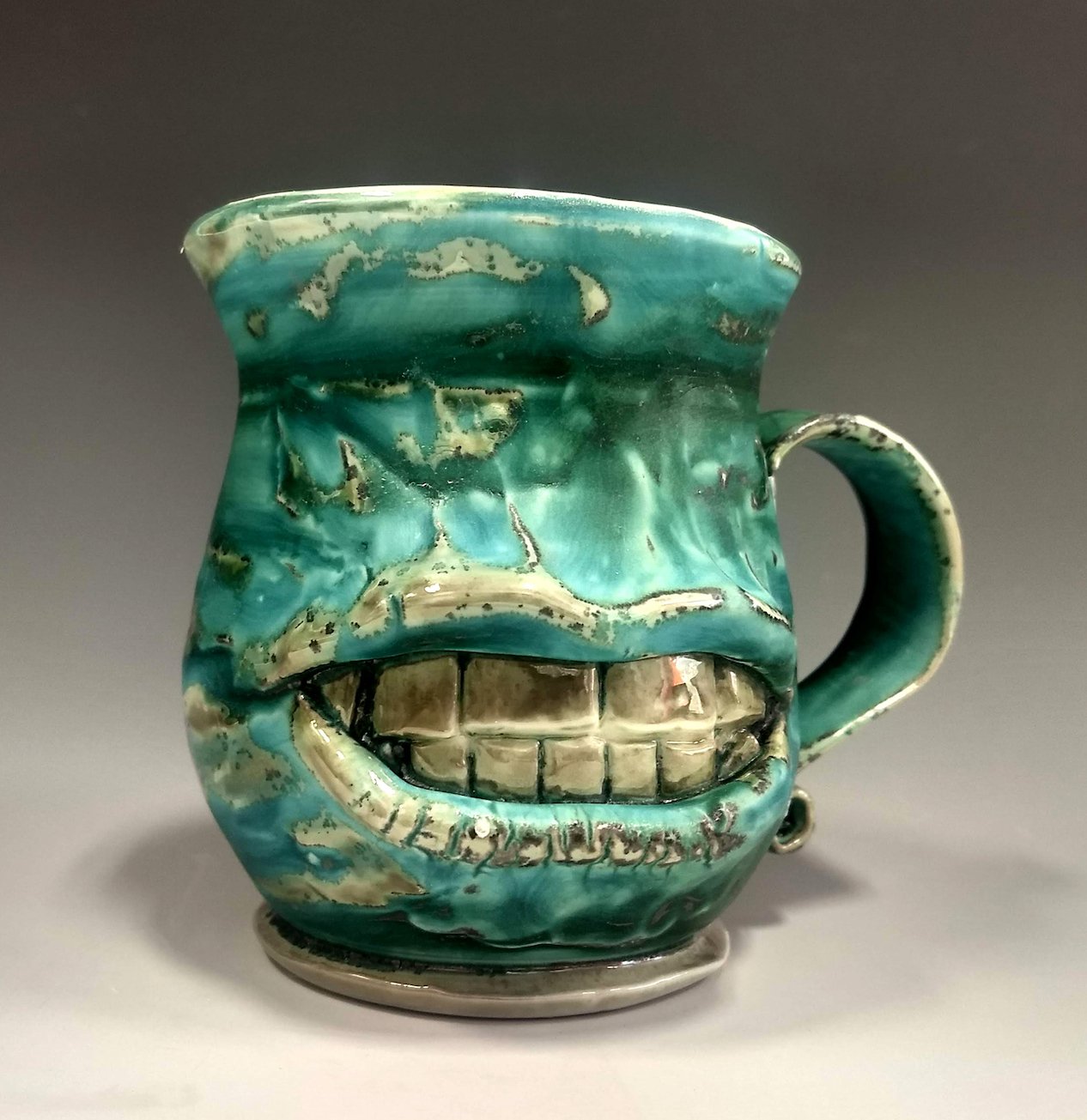
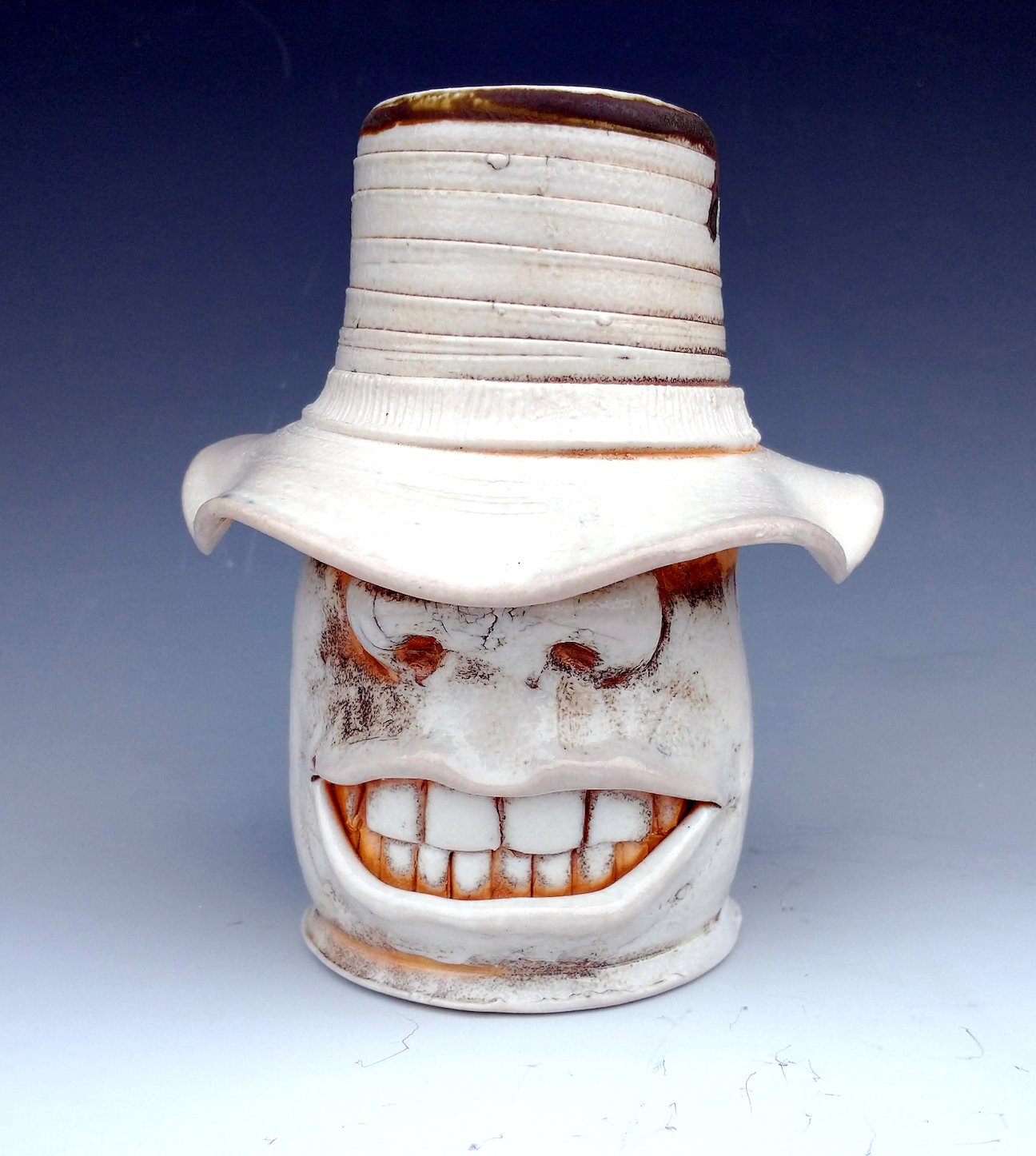
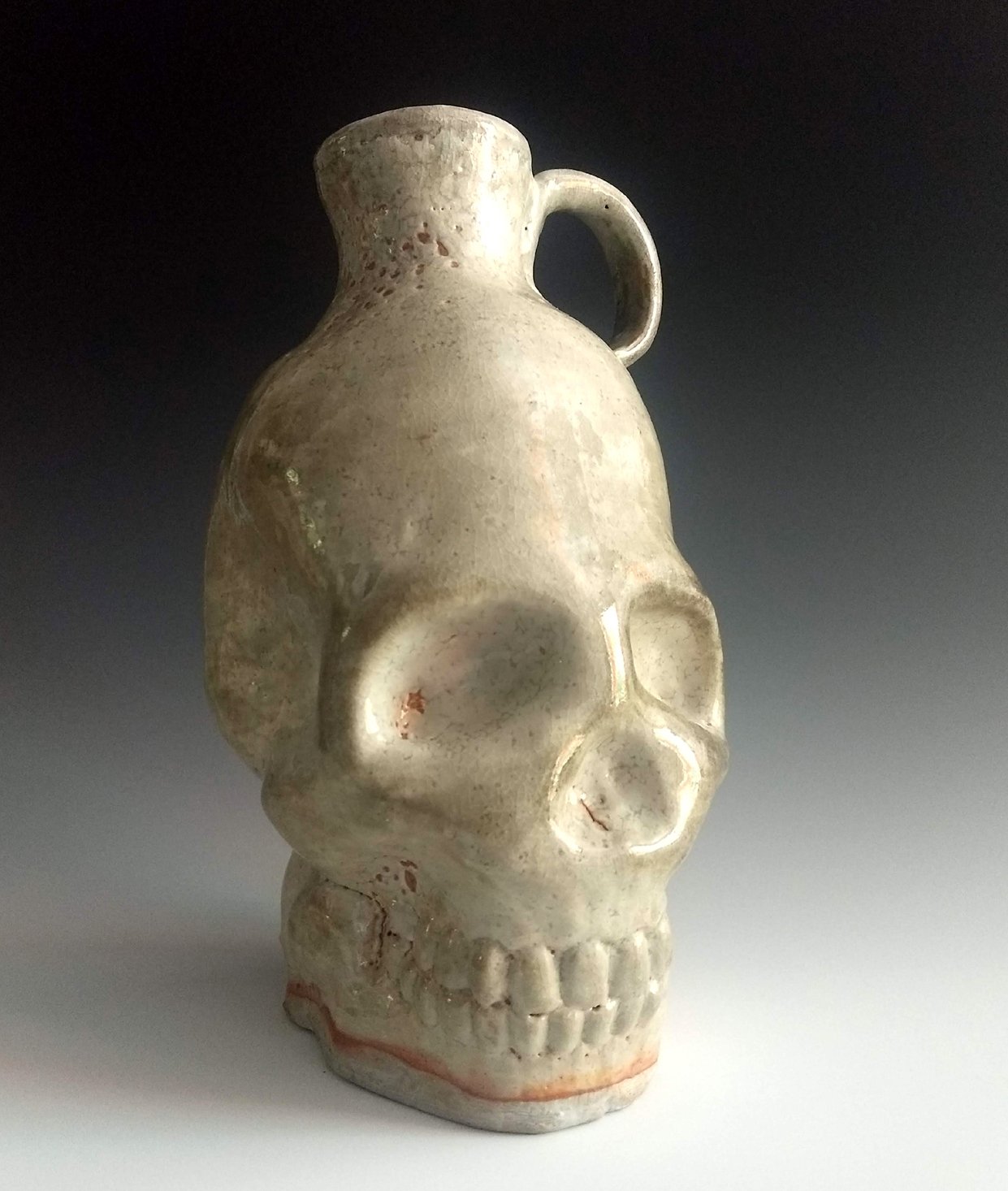
AAS: Was working with your hands and creating things something you did even as a kid?
Laurel’s Unicorn, 35” x 15” x 15”, painted steel
AD: Yes, I felt like that art was the only thing I was ever good at. I discovered that I could draw by drawing Ninja Turtles, like many of the best artists of my generation! I can still draw pretty ok, and I wish I had the chance to do it more. When I first went to college, I was taking painting courses, but I felt more drawn to the wood and metal shop for some reason.
I think the idea of building things in three-dimensions felt more real to me and less like the illusion of drawing or painting. Of course, I have a canned response: I love working with metal for its versatility, strength, and beauty, and ceramics for its unpredictability, warmth, and rawness.
I am thinking a lot about my work and where I want to take it. I’m getting work ready for a solo show at the Batesville Arts Council in January 2024. But I like making things just because. I made a unicorn sculpture at a time when I felt disconnected from my family and just wanted to make something that would bring them joy. I’d been wanting to do a simple piece for my mom’s yard for a long time to replace an old rotting sculpture and since her granddaughter gives her a lot of joy, I thought I could use her as inspiration. I had my mom send me some of my niece’s unicorn drawings and I adapted them to be cut out with the CNC. It isn’t a strict scan of her drawing but does have wings, a golden interior globe and hearts flying from its body that she drew. It was really healthy to make something just for fun and as a gift to people that I love. It's incredibly silly and girlie and it's the best thing I’ve ever made, pretty much the apex of my career.





